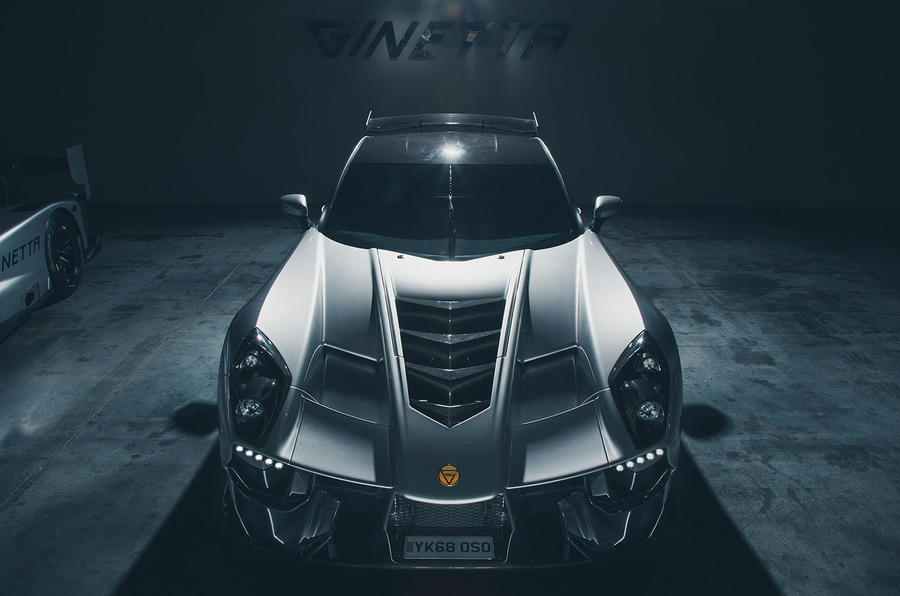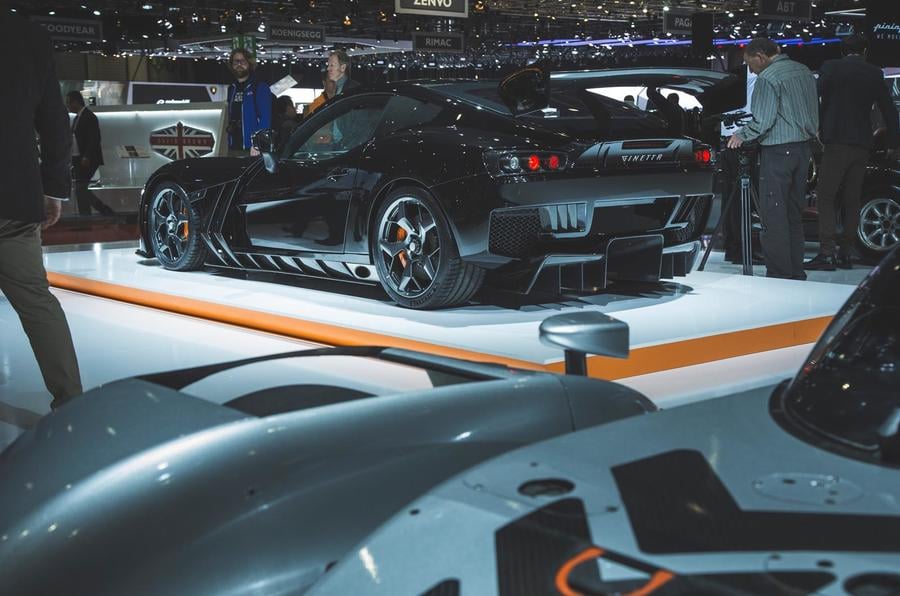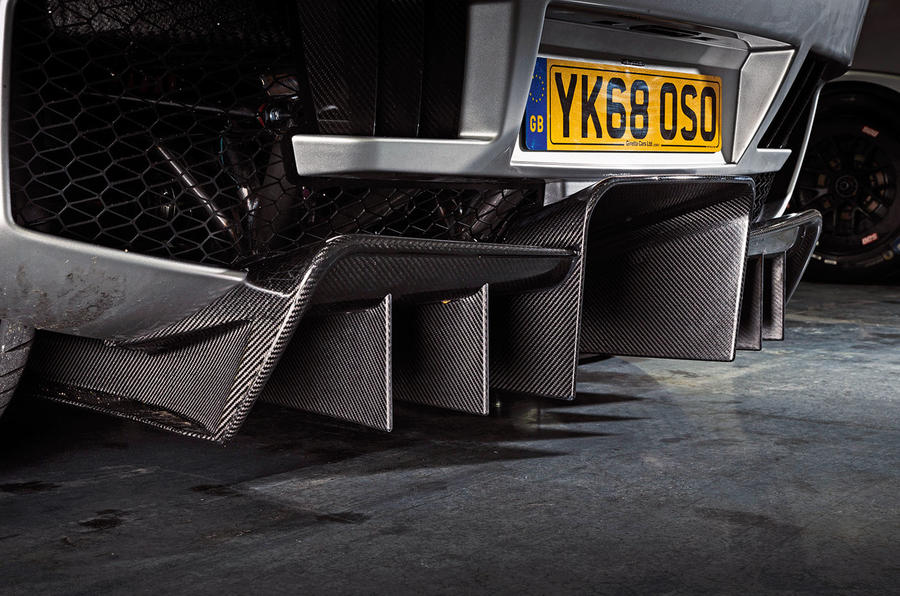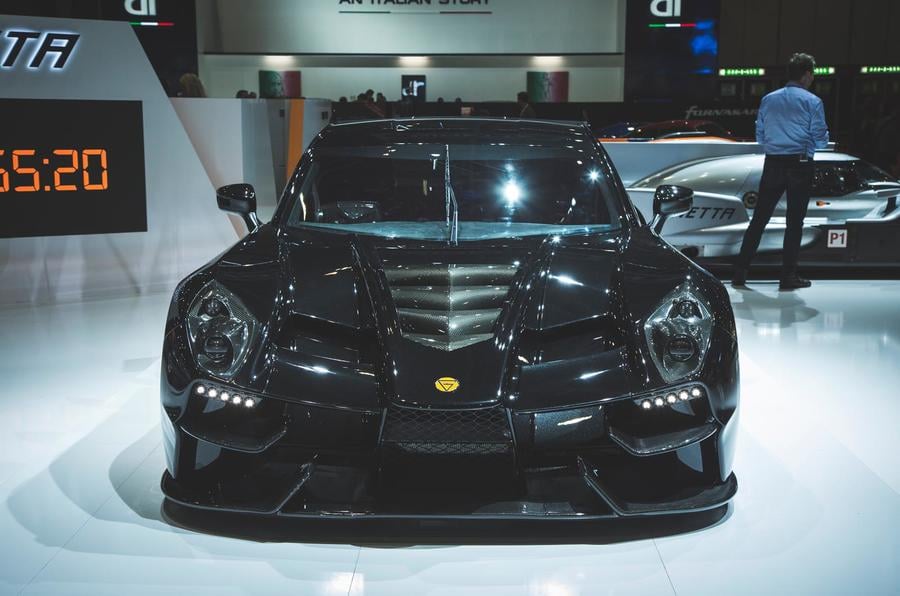Ginetta’s Ferrari rival was first revealed in 2019 but the supercar maker has confirmed it is still in the works.
Ginetta has reaffirmed its commitment to producing its 320km/h, Ferrari-priced supercar, which is still in development alongside the upcoming G56 GT Academy and GT4 race cars.
The Ginetta Akula was first revealed in 2019 and details have been thin on the ground since then. In a statement sent to Automotive Daily Network partner Autocar, Ginetta said it will continue to pursue production for the model, having been through “an uncertain period of time”.
The statement also said: “Our focus has shifted through the pandemic to focus on developing our new G56 GT Academy car and new GT4 car. The Akula has remained in development since the initial concept was launched a few years back.
“It has been an uncertain period in time for everyone and we have dedicated our attention on producing competitive race cars to keep the industry thriving not just in the UK but globally too.
“We have lots of exciting plans in the pipeline as we continue to grow the Ginetta group of brands.”
The Akula was launched as a shock new 320km/h Ferrari-priced supercar. The firm originally unveiled a fully finished, ready-to-drive version at Geneva’s Palexpo, scene of the world’s most popular motor show.
Car makers routinely leak news and images before they have much to show, to build anticipation. But Ginetta ignored the window dressing and built its new Akula supercar to completion in total secrecy, depending on impressive technical capability developed over a decade, and sustained by the sense of destiny of its owner Lawrence Tomlinson, former Le Mans class winner and incorrigible lover of fast cars.
The Akula is a low, aggressively styled but essentially practical front/mid-engined coupé. It has a bespoke, all-carbonfibre tub chassis built alongside the company’s race cars and clad with carbonfibre body panels. It is shaped for an aerodynamic performance normally not possible in road cars and powered by an extremely light and compact Ginetta-designed 90deg V8 engine of just over 6.0 litres, producing around 440kW and 700Nm of torque. The transmission is a unique Ginetta-developed creation, a six-speed sequential paddle-shift unit with the diff connected to the engine (and multi-plate clutch) by a short carbonfibre tailshaft.
The engine, dry sumped and fuelled by Ginetta’s own throttle bodies, has its block milled entirely from billet aluminium for extreme lightness and strength. The very compact unit is normally aspirated for instant throttle response. Ginetta’s codename for it was BB6 (the ‘6’ standing for 600bhp) and Tomlinson admits he’s already considered a BB10. With the engine in place, the car weighs just 1150kg, undercutting mid-engined rivals by at least 150kg and the heaviest by 350kg.
Tomlinson cheerfully admits his supercar project is completely new territory for the company he bought in 2005 as something of a sports car underachiever (after failing to buy TVR) and has built it up into a race-minded technology powerhouse. An engineer by training, and one who designs and develops his own car, Tomlinson has driven the new supercar in anger at Blyton Park, a test and sprint track he owns.
“Why have we done it? Because we can, I guess,” Tomlinson explained at the car’s launch when asked the most obvious question. “We’ve made decent progress on other fronts. We’re racing Toyota in LMP1, we built the first LMP3 car with the blessing of the Le Mans organisers, our GT4 car is very successful globally and we’ve been running the world’s most successful junior racing series for many years. We have all the design and technical capability a project like this needs, we’re a proud British operation, and we need to show it off.”
Despite the secrecy, Tomlinson discreetly contacted the circle of enthusiasts he knows and came up with a handful of orders from serial Ferrari-Lamborghini-McLaren buyers who know a good driver’s car when they see one. This expanded to 14 as word discreetly spread, accounting for 60 per cent of the 20 units that were originally to have been made in 2020, its first intended year of production. Ginetta has said its aim is to preserve exclusivity, with an annual output of just 30 to 50 cars thereafter.
The new supercar is bigger than any previous Ginetta road car, a shade longer than the latest Porsche GT3 at 4640mm, about 100mm wider and nearly 200mm longer in the wheelbase. Although officially described as front/mid-engined, the car is closer than most rear/mid-engined rivals to having its engine in the true centre of the car (the tiny V8 is so far back that its drive pulleys sit directly beneath the windscreen wipers) and the 49 per cent front, 51 per cent rear weight distribution proves the fact.
This layout leaves sufficient space to house a carbonfibre front structure that both provides FIA GT3 levels of crash protection and light but rigid mounting for the double-wishbone front suspension, whose coil-over units are anchored in the centre of the car and connected by pushrods. A similar system is used at the rear (pushrod-operated double wishbones mounted on a carbonfibre subframe) but there’s also space for a remarkably large boot, well able to house two sets of golf clubs. The Michelin Pilot Sport 4 tyres are substantial without being outrageous: 275/35 ZR19s in front and 305/30 ZR20s behind, and all running on own-design centre-lock Ginetta alloy wheels. Brakes are Alcon carbon discs.
Tomlinson won Le Mans GT2 class in a front/mid-engined Panoz (and now owns the winning car) but demurs at suggestions that sentiment might have played a part in the layout of his new supercar. It’s just the right way of doing things, he insists. Having the engine so far back allows an optimised aero package. It also allows the front wishbones to be long, unimpeded by an engine, which in turn helps keep the tyres flat on the road as the ride height changes when aero loads build at speed.
For a road car, the new Ginetta promises a phenomenal aerodynamic performance. The company has spent many hours in the Williams wind tunnel developing aerodynamics whose efficiency is clearly all-important in styling that bristles with planes and ducts and aerofoils, plus a high rear deck dominated by a huge wing (with the same aerofoil shape as the Ginetta LMP1 car) and an underbody diffuser that would do justice to many an pure racer. A pair of business-like slash-cut exhausts prevent pipework interrupting underbody airflow.
The same goes for the downforce, which amounts to an extraordinary 376kg at 160km/h, well ahead of cars in the LaFerrari and McLaren P1 bracket, and within 5 per cent of Ginetta’s own current LMP3 car.
Tomlinson is anxious that none of this talk of lightness and extreme aero should obscure the fact that this is very much a practical road car. The “sensible” doors are sized for easy ingress/egress, and he’s passionate about their panel fit. The boot can wallow 675 litres of luggage, all sight lines are designed for easy visibility in traffic and the car will come with niceties such as automatic headlights, a reversing camera, an electronic parking brake, parking sensors, sat-nav, ABS and traction control, climate control, heated screens and full connectivity. Door handles and inside switchgear will be milled from billet aluminium. Ginetta’s comprehensive warranty means the company will take charge of the cars for their first two years “virtually anywhere in the world”.
Owners will be able to configure their cars in almost any colour and trim combination and every owner will get a race-style car fitting: the seats are moulded into the tub for lightness, so the steering column and pedal box move to suit individual drivers, with seat shapes alterable by inserts or bespoke padding. Tomlinson wants Ginetta ownership to be a highly personal experience and believes the numbers of cars made will be important for its exclusivity. He’s serious about knowing owners as individuals.
Steve Cropley









